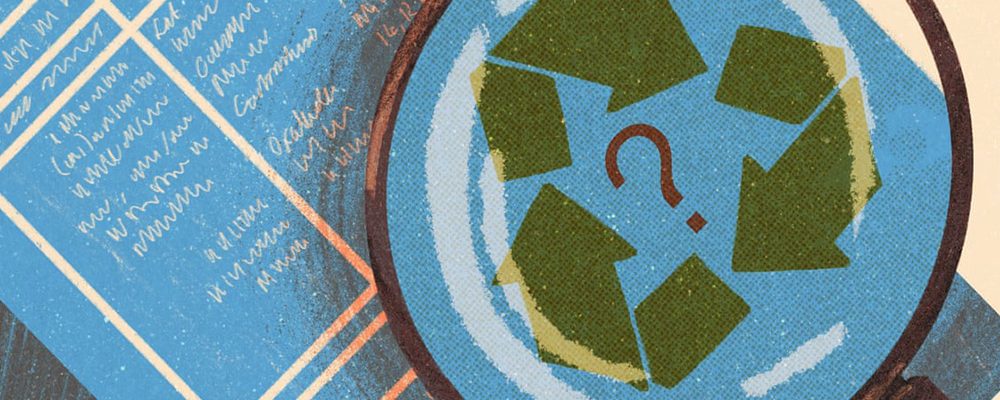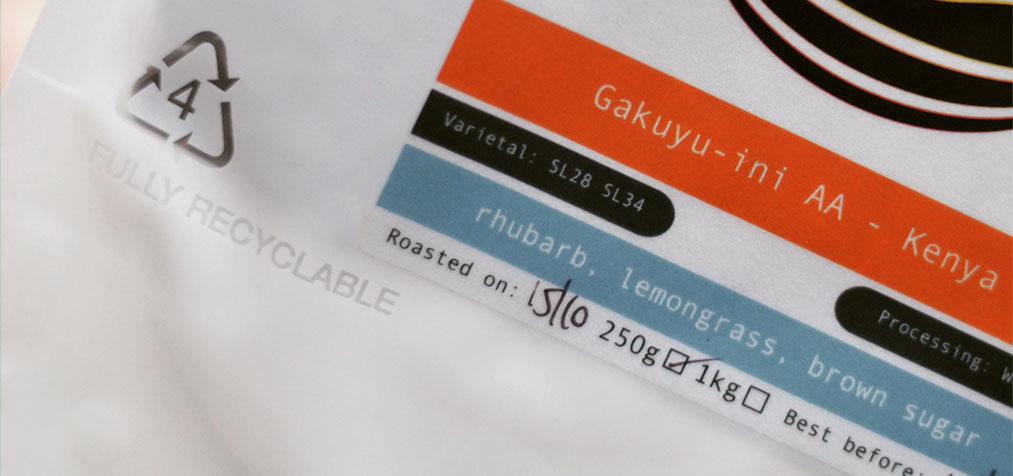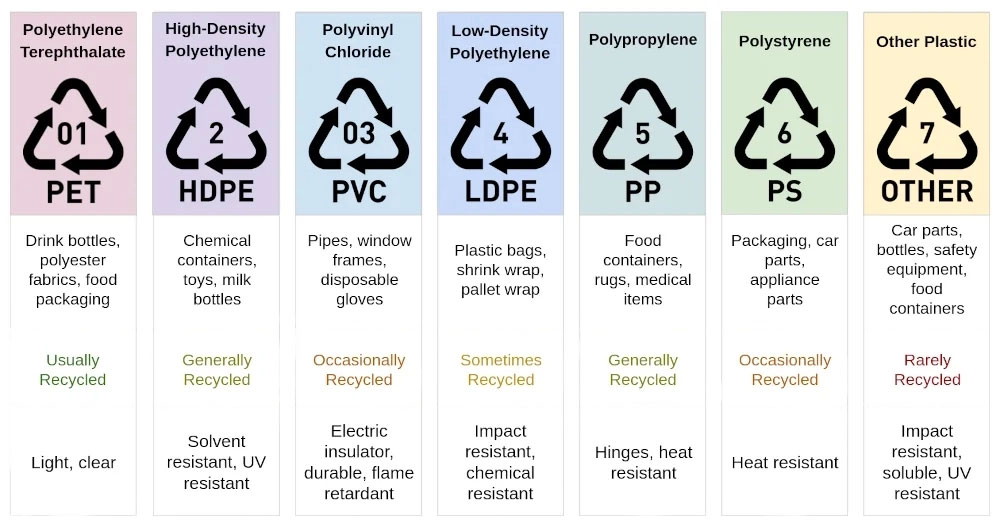How to turn recyclable coffee bags into brand advantage?
As consumers become more environmentally conscious, businesses in the coffee industry are under increasing pressure to adopt eco-friendly practices and reduce their environmental impact. One way that coffee brands and roasters can do this is by using recyclable coffee bags. However, simply using these materials is not enough to stand out in a crowded market. To truly turn recycled coffee bags into a brand advantage, branders must find creative ways to promote their eco-friendliness and differentiate themselves from their competitors.
But what is recyclable coffee bags? Which materials you can use? How to improve our brand advantage with recyclable coffee bags? This article will help you know more about it.
What is recyclable coffee bags?
Recyclable coffee bags refer to coffee packaging materials that can be recycled instead of being discarded as waste. These bags are designed to reduce the environmental impact of coffee packaging by promoting sustainability and reducing waste. Recyclable coffee bags are made from a variety of new materials, including paper, biodegradable materials, and plastics that is easily recycled. Overall, the use of recyclable coffee bags is a positive step towards reducing the environmental impact of the coffee industry and promoting sustainability.
Recyclable coffee bags are an environmentally friendly and sustainable option for coffee packaging. They offer a range of benefits, including reduced waste, affordable costs, and branding opportunities for coffee companies. It is important for branders to provide clear instructions on how to properly recycle their bags to ensure they are disposed of properly. By choosing recyclable coffee bags, coffee companies can make a positive impact on the environment while strengthening their brand identity.

which materials can you use for recyclable coffee bags?
Many plastic coffee bags are recyclable, and the recycling process can help reduce waste and conserve resources. To make the recycling process easier and more effective, many coffee bags are labeled with a Resin Identification Codes (RIC) that identifies the type of plastic used in the bag. Understanding these codes help you make informed choices which materials can you use for coffee packaging.

Here are the most common recycling material found on plastic coffee packaging and what they mean:
- Code 1: Polyethylene (PE) – This is a lightweight, flexible, and transparent plastic that is commonly used for coffee bags. It is also one of the most widely recycled plastics.
- Code 2: High-density polyethylene (HDPE) – This plastic is more durable than PE, it is popular for coffee bags. It is also widely recycled.
- Code 3: Polyvinyl chloride (PVC) – This plastic is not suitable for coffee bags due to its environmental impact and health risks. It is also not widely recycled.
- Code 4: Low-density polyethylene (LDPE) – This plastic is softer than PE and is common for coffee bags, but it is more prone to tearing and deformation than HDPE. It is also widely recycled.
- Code 5: Polypropylene (PP) – This plastic is heat-stable and water-resistant, making it ideal for coffee bags. It is also more durable than PE and LDPE and is widely recycled.
- Code 6: Polystyrene (PS) – This plastic is relatively fragile and is typical for coffee cups and lids rather than coffee bags. It is not widely recycled.
- Code 7: Other plastics – This code is used for plastics that do not fit into the above categories. These plastics are not typical for coffee bags, and their recyclability may vary.

By understanding these codes, coffee branders, producer and wholesalers can make informed choices about the coffee packaging they use and how to properly recycle it. To promote sustainable coffee packaging, it is important to choose bags made from recyclable plastics and to recycle them properly. This can help reduce waste and conserve resources, while also promoting a healthier environment.
How To Dispose Of Recyclable Coffee Packaging?
Disposing of recyclable coffee packaging requires a bit of research and effort, but it is worth it to promote sustainability and reduce waste. Check with your local recycling program to determine which materials are accepted, clean and dry the packaging before recycling, and consider upcycling or biodegradable options. By taking these steps, you can ensure that your coffee packaging is recycled or disposed of properly.
Firstly, it is important to check the type of recyclable coffee packaging you have.
Different materials require different recycling processes, and some may not be recyclable in your area. Check with your local recycling program to determine which materials are accepted and how they should be sorted.
Once you have determined which materials are recyclable, make sure they are clean and dry before recycling. Food and liquid residue can contaminate recycling materials and prevent them from being recycled. Rinse out any coffee grounds or residue and allow the packaging to dry completely before recycling.
In addition to traditional recycling, there are other ways to dispose of recyclable coffee packaging. Some coffee companies offer a mail-back program where customers can send back their used packaging for recycling. This is a convenient option for those who do not have access to local recycling programs.
Another option is to upcycle coffee packaging into new and useful products.
By cleaning and processing the packaging, it can be transformed into items such as tote bags, wallets, and even furniture.
Biodegradable coffee packaging is another option for those who prioritize sustainability. These materials are designed to break down naturally over time, reducing their environmental impact. Biodegradable packaging can be composted or disposed of in a way that allows them to decompose without harming the environment.
It is also important to note that some coffee packaging may not be recyclable at all. This includes materials such as plastic-coated paper or materials that are contaminated with food or liquid. In these cases, it is best to dispose of the packaging in the trash.
The Future Development Trend of Recyclable Coffee Packaging Bags
Recyclable coffee bags have made significant strides in reducing waste and promoting sustainability in the coffee industry. However, there is still room for improvement and innovation in the future development of these packaging materials.
One trend in the future of recyclable coffee bags is the use of advanced recycling technologies. These technologies can break down materials that were previously difficult or impossible to recycle, such as multi-layered plastics. This can expand the range of materials that can be recycled and reduce waste even further.
Another trend is the use of more sustainable and renewable materials in the production of recyclable coffee bags. This includes materials such as hemp, bamboo, and other plant-based materials. These materials have a lower environmental impact than traditional materials and can be recycled or composted after use.
The development of closed-loop systems for coffee bag production and recycling is also a potential trend for the future. This involves collecting used coffee bags, processing them into new bags, and using them to package coffee once again. This approach eliminates waste and creates a sustainable cycle of coffee bag production and recycling.
In addition, there is a growing trend towards designing coffee packaging with a focus on circular economy principles. This means designing products that can be used, recycled, and repurposed in a closed loop system, reducing the need for new materials and minimizing waste.
Finally, the future of recyclable coffee bags may involve integrating technology into the packaging itself. This could include smart packaging that can track the freshness of the coffee or provide information about the coffee’s origin and brewing recommendations. This type of packaging could add value for consumers while also promoting sustainability.
10 brands are leading the way in recyclable coffee bags and sustainable packaging
these 10 coffee brands are setting an example for the industry by prioritizing sustainable and recyclable packaging. From biodegradable materials to post-consumer recycled materials, these brands are using a variety of methods to reduce their environmental impact. By adopting these practices, coffee brands can not only reduce waste but also attract customers who prioritize sustainability in their purchasing decisions.
1. Starbucks:
The coffee giant has committed to making all of its coffee packaging recyclable by 2022. They are also working on developing more sustainable materials for their cups and other products.
2. Blue Bottle Coffee
This specialty coffee company uses biodegradable bags made from plant-based materials. Their bags are also designed to be resealable, reducing food waste.
3. Stumptown Coffee Roasters
Stumptown uses bags made from 100% recycled materials, with a valve made from compostable materials. They also encourage customers to return their used bags to their stores for recycling.
4.La Colombe Coffee Roasters
La Colombe uses bags made from 60% post-consumer recycled materials. They also offer a mail-back program for customers to send back their used bags for recycling.
5.Peet’s Coffee
Peet’s uses bags made from 60% post-consumer recycled materials and 40% FSC-certified paper. They also encourage customers to bring their own reusable cups to reduce waste.
6.Counter Culture Coffee
This specialty coffee company uses bags made from 100% biodegradable materials. They also prioritize sourcing coffee beans from sustainable and ethical sources.
7.Ritual Coffee Roasters
Ritual uses bags made from biodegradable materials and encourages customers to return their used bags for recycling. They also prioritize working with farmers who use sustainable and ethical practices.
8.Intelligentsia Coffee
Intelligentsia uses bags made from 60% post-consumer recycled materials and 40% FSC-certified paper. They also prioritize working with farmers who use sustainable and ethical practices.
9.Verve Coffee Roasters
Verve uses bags made from 60% post-consumer recycled materials and 40% FSC-certified paper. They also prioritize sourcing coffee beans from sustainable and ethical sources.
10.Equator Coffees
Equator uses bags made from 100% biodegradable materials and encourages customers to return their used bags for recycling. They also prioritize working with farmers who use sustainable and ethical practices.
How to turn recyclable coffee bags into brand advantage?
Recyclable coffee bags are a great way to reduce waste and help the environment. As a coffee brand, you can leverage the recyclable nature of your coffee bags to create a unique brand identity and increase consumer loyalty. By doing so, you not only help the environment but also strengthen your brand’s position in the market.
Firstly, you can emphasize the eco-friendliness of your brand by incorporating recyclable coffee bags into your marketing strategy. Use your website and social media platforms to highlight the benefits of using recyclable bags and how it aligns with your brand values. This will attract like-minded consumers who prioritize sustainability and will help you stand out in a crowded market.
Secondly, use your recyclable coffee bags to tell a story about your brand. Include information about the materials used in the bags, the manufacturing process, and how they can be recycled. This will give your customers a sense of connection with your brand and make them feel good about their purchase.
Thirdly, collaborate with other brands that share your values and use recyclable materials in their products. This will not only increase your reach but also strengthen your brand’s identity as an eco-conscious company.
Fourthly, incentivize your customers to recycle your coffee bags. You can offer discounts or exclusive promotions to customers who return their used bags to your store or provide instructions on how to recycle the bags properly.
Fifthly, use your recyclable coffee bags as an opportunity to showcase your creativity. Experiment with different designs and colors to make your bags stand out on store shelves and in social media posts. This will increase brand recognition and help you build a loyal customer base.
How to choose the recyclable coffee bags supplier?
Choosing a supplier for recyclable coffee bags requires careful research and consideration. Look for suppliers that use eco-friendly materials and manufacturing processes, have third-party certifications, offer closed-loop systems, prioritize ethical and sustainable practices, offer customizable options, and have a good reputation. By choosing a supplier that meets these standards, coffee companies can reduce their environmental impact and promote sustainability in their business practices.
Soaraway Packaging have been specialized in coffee bags for 18 year. We already have a mature R&D team and sales team, which can provide customers with perfect packaging bag solutions more efficiently. At the same time, we continue to develop sustainable products, hoping to contribute to the green environment. If you just need custom packaging bags now, please contact us.
